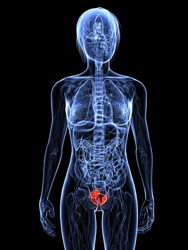Bladder cancer management
Bladder cancer (BC) is the fifth most common neoplasm in industrialised countries, accounting for about 5–7 % of all new diagnosed malignancies in men, and about 2–2.5 % in women. The overall 5-year survival rate is about 65 %, making BC a major burden for all healthcare systems. The main goal of the EU-funded UROMOL(opens in new window) project was to predict BC disease course using molecular and clinical risk factors. The objective was to identify molecular markers that will predict the likelihood of bladder tumour progression in patients'. This would reduce the number of cystoscopies required, or increase surveillance and treatment, depending on minimal or high likelihood of progression. Furthermore, urine-based biomarkers were tested as diagnostic tools and as predictors for later tumour recurrence. Collection of tumour and blood samples was completed in August 2012 and included a total of 3 042 patients in the study. The patients have been followed during 8 011 visits to the different clinical centres. A total of 1 289 tumours, 3 359 urine samples and 2 298 blood samples have been collected during the project period. Analysis and classification of tumours was done using mRNA signature in all tumours from each patient. From all mRNAs with prognostic information, 12 were selected as having strong predictive power. The urine assays were organised for microsatellites, methylation markers and mutations determined in urine. The data from the retrospective assays on 2 000 urine samples proved the possibility to replace some of the cystoscopies with urine testing. The analysis of the mutations in the genome that predict poor outcome also showed promising prognostic power in retrospective validation. These genome mutations are currently being tested in prospective validation. Using new disease models, researchers constructed predictive charts — nomograms that assembled risk information into a simple web-based tool for clinical usage. Together with the urine-based tests, this should further reduce the general frequency of cystoscopies of the bladder. UROMOL approaches for BC management and study outcomes were presented in 50 publications. Nomograms could also make it possible to tailor and provide the right treatment for patients.







